
We need a new land bill because the present one suffers from various shortcomings, says Rural Development Minister Jairam Ramesh, below, left.
The principle objective of the Bill is fair compensation, he tells Rediff.com in an exclusive interview. An excerpt:
Why is there a need for a new Bill?
There is unanimity of opinion across the social and political spectrum that the current Law (The Land Acquisition Act 1894) suffers from various shortcomings.
Some of these are:
Forced acquisitions: Under the 1894 legislation once the acquiring authority has formed the intention to acquire a particular plot of land then it can carry out the acquisition regardless of how the person whose land is sought to be acquired is affected.
No safeguards: There is no real appeal mechanism to stop the process of the acquisition. A hearing (under section 5A) is prescribed but this is not a discussion or negotiation. The views expressed are not required to be taken on board by the officer conducting the hearing.
Silent on resettlement and rehabilitation of those displaced: There are absolutely no provisions in the Bill relating to the resettlement and rehabilitation of those displaced by the acquisition.
Urgency clause: This is the most criticised section of the law. The clause never truly defines what constitutes an urgent need and leaves it to the discretion of the acquiring authority. As a result almost all acquisitions under the Act invoke the urgency clause. This results in the complete dispossession of the land without even the token satisfaction of the processes listed under the Act.
Low rates of compensation: The rates paid for the land acquired are the prevailing circle rates in the area which are notorious for being outdated and hence not even remotely indicative of the actual rates prevailing in the area.
Litigations: Even where acquisition has been carried out the same has been challenged in litigations on the grounds mentioned above. This results in the stalling of legitimate infrastructural projects.
 Recent observations by the Supreme Court: Justice Ganpat Singhvi of the Supreme Court of India has observed, in the wake of repeated violations that have come to light over the last few months, that the Land Acquisition Act 1894 has “become a fraud”. He further observed that the law seems to have been drafted with “scant regard for the welfare of the common man”.
Recent observations by the Supreme Court: Justice Ganpat Singhvi of the Supreme Court of India has observed, in the wake of repeated violations that have come to light over the last few months, that the Land Acquisition Act 1894 has “become a fraud”. He further observed that the law seems to have been drafted with “scant regard for the welfare of the common man”.
Another bench of the honourable Supreme Court has echoed this sentiment in its observation that: “[T]he provisions contained in the Act, of late, have been felt by all concerned, do not adequately protect the interest of the land owners/persons interested in the land. The Act does not provide for rehabilitation of persons displaced from their land although by such compulsory acquisition, their livelihood gets affected…To say the least, the Act has become outdated and needs to be replaced at the earliest by fair, reasonable and rational enactment in tune with the constitutional provisions, particularly, Article 300A of the Constitution. We expect the law making process for a comprehensive enactment with regard to acquisition of land being completed without any unnecessary delay.”
...
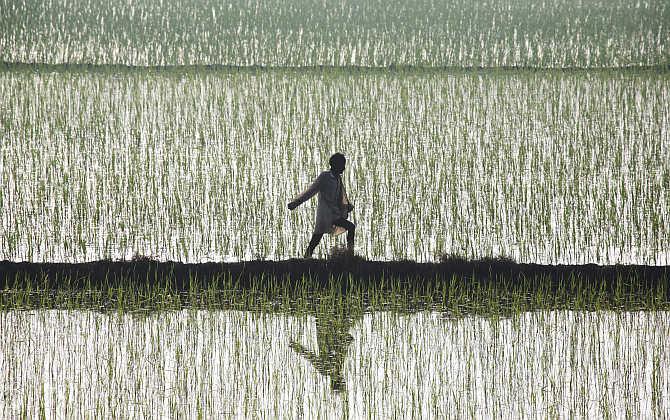
What is the significance of the new title of the Bill, 'The Right to Fair Compensation and Transparency in Land Acquisition, Rehabilitation and Resettlement Bill 2012'?
The title of the old law conveyed that its primary purpose was to expedite the acquisition of land. However, the principle objective of the new Bill is fair compensation, thorough resettlement and rehabilitation of those affected, adequate safeguards for their well-being and complete transparency in the process of land acquisition. The title has been amended to reflect this.
The title of the new Bill conveys the Congress-led UPA government’s determination to address widespread and historical injustices that occur in the wake of land acquisition by establishing strong legal prerequisites that need to be discharged first.
...
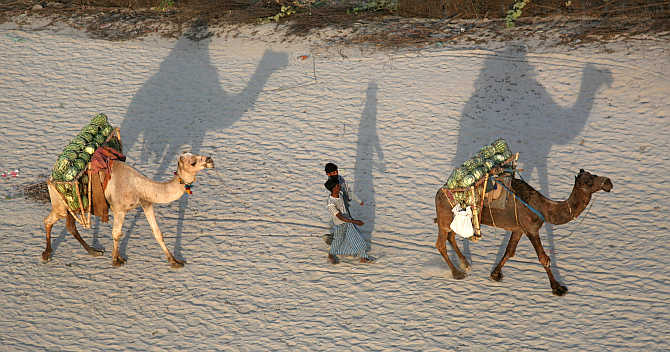
But why does the government need to acquire land for private companies as well as public-private partnership projects?
Land records in most parts of the country are fragmented and disorganised. In most cases they haven’t been updated for decades. The new law overcomes that by ensuring the collector updates the land records and also pays up to four times the value to correct any inaccuracies.
If land is purchased then there are no benefits for livelihood losers who are usually far greater in number than the land-owners. This Bill ensures that they are taken care of and not simply displaced. The sheer inequality in terms of bargaining power between large-scale corporations and small farmers and other marginalised groups increases the likelihood of unfair agreements. Contracts tend to be signed in favour of the party negotiating from a greater position of strength. That is why the government is required to bridge the gap and bring balance to this relationship.
A legitimate need for acquisition by the State itself (to build public goods such as roads, schools and hospitals) can be undermined and stalled by groups with vested interests. If there is no sovereign power to compel these groups, a single individual or group of individuals can hold a process hostage, if they so desire, merely by refusing to part with land for selfish reasons. Or sometimes, even without reason.
Furthermore, in times of crisis such as war, famine and floods, coupled with absence of legislation clarifying and guiding the State's exercise of eminent domain, situations can emerge that can possibly jeopardise human lives.
...

What are the highlights of the new Bill?
Compensation: Given the inaccurate nature of circle rates, the Bill proposes the payment of compensations that is up to four times the market value in rural areas and two times the market value in urban areas.
Resettlement and rehabilitation: This is the very first law that links land acquisition and the accompanying obligations for resettlement and rehabilitation. Over five chapters and two entire Schedules have been dedicated to outlining elaborate processes (and entitlements) for resettlement and rehabilitation. The Second Schedule in particular outlines the benefits (such as land for land, housing, employment and annuities) that shall accrue in addition to the one-time cash payments.
Retrospective operation: To address historical injustice the Bill applies retrospectively to cases where no land acquisition award has been made. Also in cases where the land was acquired five years ago but no compensation has been paid or no possession has taken place, then the land acquisition process will be started afresh in accordance with the provisions of this act.
Multiple checks and balances: A comprehensive, participative and meaningful process (involving the participation of local Panchayati Raj Institutions) has been put in place prior to the start of any acquisition proceedings. Monitoring committees at the national and state levels to ensure that R&R obligations are met have also been established.
Special safeguards for tribal communities and other disadvantaged groups: No law can be acquired in scheduled areas without the consent of the gram sabhas. The law also ensures that all rights guaranteed under such legislations as the Panchayat (Extension to Scheduled Areas) Act 1996 and the Forest Rights Act 2006 are taken care of. It has special enhanced benefits (outlined in a dedicated chapter) for those belonging to the Scheduled Castes and Scheduled Tribes.
Safeguards against displacement: The law provides that no one shall be dispossessed until and unless all payments are made and alternative sites for the resettlement and rehabilitation have been prepared. The third schedule even lists the infrastructural amenities that have to be provided to those that have been displaced.
Compensation for livelihood losers: In addition to those losing land, the Bill provides compensation to those who are dependent on the land being acquired for their livelihood.
Consent: In cases where PPP projects are involved or acquisition is taking place for private companies, the Bill requires the consent of no less than 70 per cent and 80 per cent respectively (in both cases) of those whose land is sought to be acquired. This ensures that no forcible acquisition can take place.
Caps on acquisition of multi-crop and agricultural land: To safeguard food security and to prevent arbitrary acquisition, the Bill directs states to impose limits on the area under agricultural cultivation that can be acquired.
Return of unutilised land: In case land remains unutilised after acquisition, the new Bill empowers states to return the land either to the owner or to the state land bank.
Exemption from income tax and stamp duty: No income tax shall be levied and no stamp duty shall be charged on any amount that accrues to an individual as a result of the provisions of the new law.
Share in appreciated land value: Where acquired land is sold to a third party for a higher price then 40 per cent of the appreciated land value (or profit) will be shared with the original owners.
...
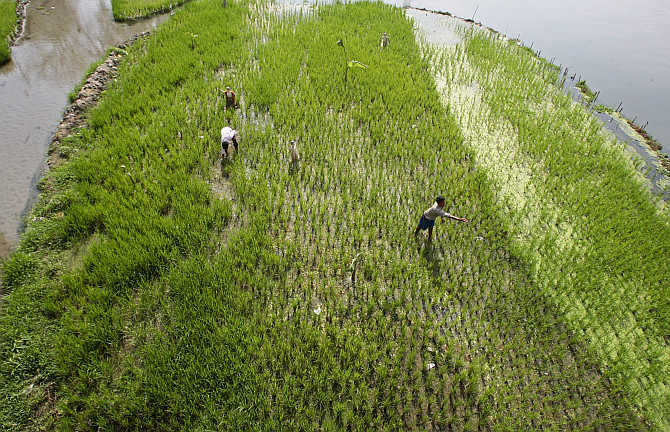
How are the interests and concerns of farmers protected?
Retrospective effect: Where awards are made but no compensation has been paid or possession has not been taken then compensation shall be paid at the rate prescribed under the new Act. Where the award has not been made the entire process shall be considered to have lapsed. Also, where acquisition has taken place five years prior to the commencement of the new law but no compensation/possession has taken place, then the proceedings shall be deemed to have lapsed.
Consent: Prior consent shall be required from 70 per cent of land losers and those working on government assigned lands only in the case of public-private partnership projects and 80 per cent in the case of private companies. This consent also includes consent to the amount of compensation that shall be paid.
Return of unutilised land: Land not used can now be returned to the original owners if the State so decides.
Share in sale of acquired land increased: The share that has to be distributed among farmers in the increased land value (when the acquired land is sold off to another party) has been set at 40 per cent.
Income tax exemption: All amounts accruing under this Act have been exempted from income tax and from stamp duty.
Strict restrictions on multi-crop acquisition: The acquisition of agricultural land and multi-crop land has to be carried out as a last resort. There will be definite restrictions on the extent of acquisition of such land in every state, to be determined by the states concerned.
Safeguards to ensure fair price: Given the way in which market value is to be calculated and the imposition of a solatium of 100 per cent over and above the amount, the farmers are guaranteed a fair price for their land.
Acquisition only if necessary: The collector has to make sure that no other unutilised lands are available before he moves to acquire farm land.
Damage to crops to be included in price: The final award has to include damage to any standing crops which might have been harmed due to the process of acquisition (including the preliminary inspection).
Share in developed land: In case their land is acquired for urbanisation purposes, 20 per cent of the developed land will be reserved and offered to these farmers in proportion to the area of their land acquired and at a price equal to the cost of acquisition and the cost of development.
Fishing rights: In the case of irrigation or hydel projects, affected families may be allowed fishing rights in the reservoirs, in such manner as may be prescribed by the appropriate government.
Additional R&R benefits: Farmers are also entitled to various rehabilitation and resettlement benefits.
Time-bound social impact assessment: The Bill mandates a social impact assessment of every project which must be completed within a period of six months.
...

What are the rehabilitation and resettlement provisions for farmers, landless and livelihood losers?
Reduced qualifying criteria: To qualify for benefits under this Act the time period has been reduced to three years of dependence (on the acquired land) instead of five.
Affected family to include tenants: The definition of affected family includes agricultural labourers, tenants including any form of tenancy or holding of right, share-croppers or artisans who may be working in the affected area for three years prior to the acquisition, whose primary source of livelihood stand affected by the acquisition of land.
Houses for all affected families: All affected families are entitled to a house provided they have been residing in an area for five years or more and have been displaced. If they chose not to accept the house they are offered a one-time financial grant in lieu of the same.
Choice of annuity or employment: All affected families are given a choice of annuity or employment; If employment is not forthcoming they are entitled to a one time grant of Rs 5 lakh per family. Alternatively they will be provided with an annuity payment of Rs 2,000 per month per family for 20 years (this will be adjusted for inflation).
Subsistence allowance: All affected families which are displaced from the land acquired shall be given a monthly subsistence allowance equivalent to Rs 3,000 per month for a period of one year from the date of award.
Training and skill development: All affected families are also given training and skill development while being offered employment.
Miscellaneous amounts: All affected families are given multiple monetary benefits such as transport allowance of Rs 50,000 and resettlement allowance of Rs 50,000.
One-time financial assistance: Each affected family of an artisan, small trader or self-employed person shall get one-time financial assistance of such amount as the appropriate government may, by notification, specify subject to a minimum of Rs 25,000.
R&R to be completed in all aspects for irrigation projects: In case of acquisition of land for irrigation or hydel project the rehabilitation and resettlement shall be completed six months prior to submergence of the lands proposed to be so acquired.
Possession upon fulfillment of conditions under Act: The collector shall take possession of land only ensuring that full payment of compensation as well as rehabilitation and resettlement entitlements are paid or tendered to the entitled persons within a period of three months for the compensation and a period of six months for the monetary part of rehabilitation and resettlement entitlements commencing from the date of the award. However, families will not be displaced from this land till their alternative R&R sites are ready for occupation.
Time limit for provision of R&R entitlements: The components of the rehabilitation and resettlement package in the second and third schedules that relate to infrastructural entitlements shall be provided within a period of eighteen months from the date of the award.
...

How are the interests and concerns of Scheduled Castes and Schedules Tribes protected?
Separate chapter: A separate chapter has been carved out to protect interests of tribals and those belonging to the Scheduled Castes. Where acquisition does take place it shall be done as a demonstrable last resort.
Approval: As far as possible no acquisition shall take place in the scheduled areas. And where such acquisition does take place it has to be done with the approval/consent of the local institutions of self-governance (including the autonomous councils where they exist).
Development plan: A development plan has to be prepared laying down the details of procedure for settling land rights due but not settled and restoring titles of tribals on alienated land by undertaking a special drive together with land acquisition. The plan must also contain a programme for development of alternate fuel, fodder and non-timber forest produce resources on non-forest lands within a period of five years sufficient to meet the requirements of tribal communities as well as the Scheduled Castes.
One-third to be paid up-front: In case of land being acquired from members of the Scheduled Castes or the Scheduled Tribes, at least one-third of the compensation amount due shall be paid to the affected families at the outset as first installment and the rest shall precede the taking over of the possession of the land.
Resettlement in the same scheduled area: The Scheduled Tribes affected families shall be resettled preferable in the same scheduled area in a compact block so that they can retain their ethnic, linguistic and cultural identity.
Land for community: The resettlement areas predominantly inhabited by the Scheduled Castes and the Scheduled Tribes shall get land, to such extent as may be decided by the appropriate government free of cost for community and social gatherings.
Alienation of tribal lands to be void: Any alienation of tribal lands or lands belonging to members of the Scheduled Castes in disregard of the laws and regulations for the time being in force shall be treated as null and void: and in the case of acquisition of such lands, the rehabilitation and resettlement benefits shall be available to the original tribal land owners or land owners belonging to the Scheduled Castes.
Fishing rights: The affected Scheduled Tribes, other traditional forest dwellers and the Scheduled Castes families having fishing rights in a river or pond or dam in the affected area shall be given fishing rights in the reservoir area of the irrigation or hydel projects.
If resettled outside scheduled area then additional benefits: Where the affected families belonging to the Scheduled Castes and the Scheduled Tribes are relocated outside of the district then they shall be paid an additional 25 per cent rehabilitation and resettlement benefits to which they are entitled in monetary terms along with a one-time entitlement of Rs 50,000.
Higher land-for-land area for SCs/STs: In every project those losing land and belonging to the Scheduled Castes or Scheduled Tribes will be provided land equivalent to land acquired or two and a one-half acres, whichever is lower (this is higher than in the case of non-SC/ST affected families).
Additional amounts: In addition to a subsistence amount of Rs 3,000 per month for a year (which all affected families get), the Scheduled Castes and the Scheduled Tribes displaced from Scheduled Areas shall receive an amount equivalent to Rs 50,000.
...
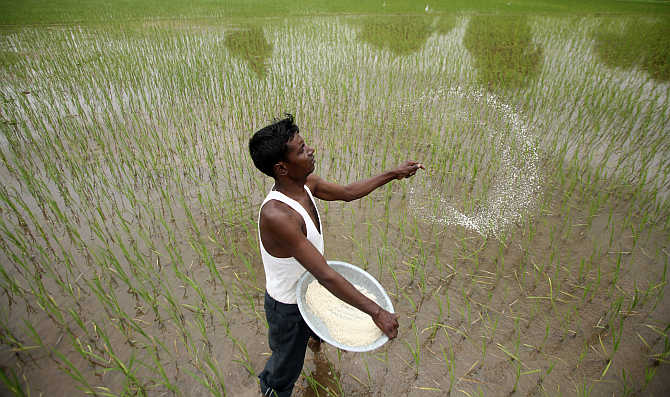
How are interests and concerns of Panchayati Raj institutions protected?
SIA in consultation with PRIs: The social impact assessment has to be carried out in consultation with the representatives of the Panchayati Raj institutions. In fact, the appropriate government is required by the law to ensure adequate representation of these institutions during the discharge of the process.
SIA reports to be shared: Reports prepared under the social impact assessment are to be shared with these individuals in their local language along with a summary.
Representation in expert group: The expert group has to have two members belonging to the Panchayati Raj institutions. This is a powerful body that has the power to reject a project.
Hearings in all gram sabhas: In case where an affected area involves more than one gram panchayat or municipality, public hearings shall be conducted in every gram sabha where more than 25 per cent of land belonging to that gram sabha is being acquired.
Consultation in compliance with Pesa: Consultation with the gram sabha in scheduled areas under the Fifth Schedule referred to in the Constitution shall be in accordance with the provisions of the Provisions of the Panchayats (Extension to the Scheduled Areas) Act, 1996.
Representation of panchayat chairpersons on R&R committee at project level: The rehabilitation and resettlement committee at project level has to have the chairpersons of the panchayats located in the affected area or their nominees as representatives. Panchayat ghars have to be provided as per the list of Infrastructural amenities given in the Third Schedule.
...
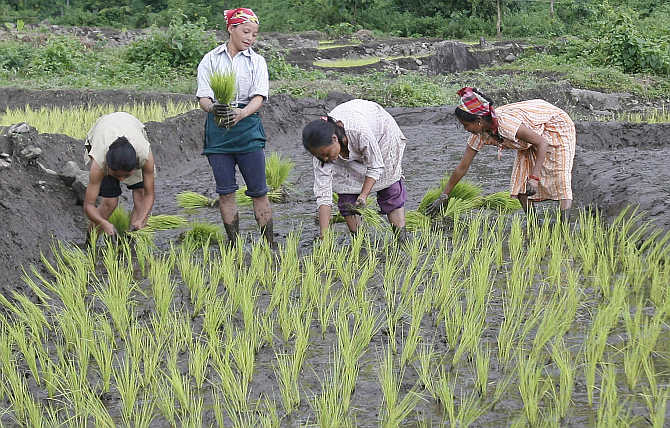
How are states interests and concerns protected?
Only a baseline: The Bill only provides the baseline for compensation and has devised a sliding scale which allows states to fix the multiplier (which will determine the final award) depending on distance from urban centres.
Choice for return to land bank or owner: Where unutilised land is returned the state can decided whether it goes to the original owner or to the land bank.
Threshold for private purchase left to government: While the Bill requires the discharge of obligations related to resettlement and rehabilitation even in the case of private purchase provided the purchase exceeds a certain threshold, it leaves the said threshold to the discretion of the state governments.
In extreme cases, equivalent amount for multi-crop land: While the Bill seeks to discourage acquisition of irrigated multi crop or agricultural land it gives the choice of earmarking how much of such lands should be reserved for protection against acquisition to the states. Furthermore if no alternative land is available to replace the multi-crop land acquired, the state can instruct the payment of an equivalent amount.
R&R procedure at discretion of state: The procedure related to the functioning of the R&R committee at project-level has been left to the state government if the acquisition is by the state.
States free to enact other laws: The state governments are free to enact any law to enhance or add to the entitlements enumerated under the Bill which confers higher compensation than payable under the Bill or make provisions for rehabilitation and resettlement which are more beneficial than those provided under the Bill.
...

How does the compensation mechanism work?
In urban areas there is no multiplier. This means no enhancement of the market value calculated occurs. However, a solatium of 100 per cent (which currently exists at 30 per cent) is imposed on this market value calculated. This ‘solatium’ amount is a compensation to ameliorate the pain of forcible acquisition. In rural areas the multiplier has been left entirely to the discretion of state governments which may range on a sliding scale from one to two depending on the radial distance from urban centres.
...

What are the safeguards in the law to ensure food security?
Special provisions have been inserted in the law to ensure that multi-crop land is acquired only as a last resort. States are also required to impose limits on the area of agricultural/multi-crop land that can be acquired in a state. No acquisition of such lands in excess of that limit can take place.
When acquiring agricultural land, the state has to cultivate an equivalent area of land elsewhere as agricultural land. If they cannot do this then they must deposit an amount equivalent to its value in an account to be used for the purposes of enhancing food security.
...

How are investor concerns addressed?
Consent: In the case of public private partnership projects consent has been reduced from 80 per cent to 70 per cent. In additional only the consent of land owners is required. Definition of market value has been amended to ensure that acquisition price doesn't form the basis for compensation calculation in future acquisitions. Also power has been given to the collector to not consider transactions which he feels are outliers and not indicative of true value while calculating market value.
Earlier there was a danger of a price-spiral as (a multiple of) price of first acquisition in an area would go into calculation of land price for any subsequent acquisitions.
States given large flexibility: A sliding scale will give states flexibility to fix compensation in rural areas (between two and four times market value), depending on their distance from urban areas. Earlier Compensation in rural areas was to be four times market value.
Restrictions/thresholds on amount of irrigated multi-crop land and net sown area per district or state available for acquisition left to the discretion of states. Earlier amount of irrigated multi-cropped irrigated land that could be acquired was capped at five per cent, and amount of net sown area that could be acquired was also capped.
Land size thresholds on when R&R on private purchase of land becomes applicable has now been left to the discretion of states. Earlier R&R on private purchases was to apply to all acquisitions above 100 acres in rural areas and 50 acres in urban areas.
Payment for R&R costs by acquirer made a ‘one off’ acquirer to put all monies in an escrow account, and ongoing commitments like annuities and benefits to be administered by agency established under this Act. Earlier the buyer would have had to pay and be involved with R&R infrastructure building until complete, and R&R annuities to perpetuity.
However, families will not be displaced from this land till their alternative R&R sites are ready for occupation. Collector can be considered appropriate government: In cases where the land sought to be acquired is below a certain threshold then the Collector can be the acquiring authority.
...
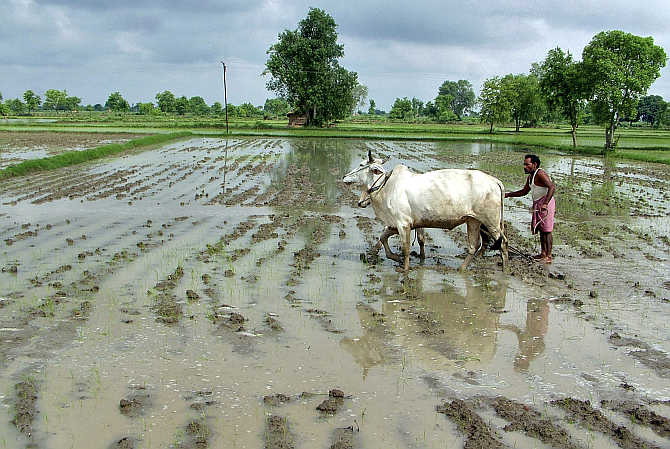
Why are there 157 amendments being made to this Bill?
It must be understood that most of these amendments are non-consequential in nature. Out of these 157 amendments, 103 amendments are typographical/definitional, 28 amendments are minor in nature and only 26 amendments are substantive in nature. This classification is explained below.
Substantive changes: These are significant changes. They bring about new provisions or thoroughly alter existing provisions on any area. For example, changes in quantum of consent required, process for determining compensation etc.
Minor changes: These are changes which are new additions but are of such a nature that they do not alter the provisions of the Bill as it was originally drafted. For example, adding time limits to existing processes. These do not fundamentally alter the process.
Typographical /nomenclature/ definitional changes: These are minor modifications which correct errors in type or clarify definitions which already exist. For example, replacing the term ‘project affected persons’ with ‘project affected families’. See Para 12 of the original Order dated November 2, 2011 on the Supreme Court’s website. The case title is Ramji Veerji Patel v. Revenue Divisional Officer (Civil Appeal No. 137 OF 2003).
...

Could you tell us a bit about the 26 substantive amendments in the Right to Fair Compensation and Transparency in Land Acquisition, Rehabilitation and Resettlement Bill 2012?
Among the 26 substantive amendments, 13 have been made in accordance with the recommendations of the Standing Committee, and they are:
Revised definition of public purpose and revised consent requirements: Given the observations made by the Standing Committee that the definition of public purpose needed reworking, an amendment has been made which collates the previously scattered definition of public purpose and streamlines it to make it easier to understand.
Restrictions on multi-crop land acquisition left to the states: In response to the recommendations made by the Standing Committee that since states better understand the peculiar and unique circumstances in their regions, the fixation of the cap should be left to them, an amendment has been made to allow state governments to fix the limits on the acquisition of multi-crop land.
Restrictions on agricultural land acquisition left to the states: In response to the recommendations made by the Standing Committee that since states better understand the peculiar and unique circumstances in their regions, the fixation of the cap should be left to them, an amendment has been made to allow State Governments to fix the limits on the acquisition of agricultural land.
Restrictions on private purchase of land left to the states: In response to the recommendations made by the Standing Committee that since land purchase falls within the legislative domain of the states they should be allowed to fix the limits of private purchase. If these limits are crossed then the rehabilitation and resettlement provisions of this law will apply.
Second amendment on restriction of private purchase: A second amendment in furtherance of the preceding amendment has been made to empower states in the fixation of purchase limits.
Additional compensation in case of double displacement: A new section has been inserted to provide for additional compensation if a affected family is displaced twice.
Special provisions for Scheduled Castes and Scheduled Tribes: Special provisions have been inserted specifically for Scheduled Castes and Scheduled Tribes in the body of the Act. These include greater benefits and enhanced safeguards.
Provision for reservation and other benefits: This amendment has been inserted specifically for Scheduled Castes and Scheduled Tribes in the body of the Act in continuation of the previous amendment.
State level monitoring committee: A state level monitoring committee has been established on the recommendations of the Standing Committee to provide supervision over R&R functions.
Period for return of unutilised land reduced: The period for the return of unutilised land has been reduced to five years from 10 years.
Unutilised land may be returned to the original owners: An amendment has been made which allows the state governments the option to return the land to the original owners if they so decide.
Extension of the new law to exempted Acts: In response to the recommendation made by the Standing Committee, an amendment has been made to extend the provisions of this Act to all the exempted legislations in the Fourth Schedule within a period of one year of its commencement.
The provisions relating to Scheduled Castes and Scheduled Tribes have been removed from the schedule to the law -- and bought into the main legislation as recommended by the Standing Committee. The 13 amendments have been made in accordance with the recommendation of the Group of Ministers are:
Deposit of amount in case of acquisition of agricultural land: A new amendment allows states the option, while acquiring agricultural land, to deposit an amount equivalent to the value of the agricultural land acquired if they are unable to find alternative land to cultivate in lieu of the acquired agricultural land (this was the original requirement).
Retrospective operation: To correct historical injustices, a retrospective clause allowing certain classes of individuals to benefit from enhanced compensation and rehabilitation and resettlement has been provided for.
Revised social impact assessment process: A revised provision for a more thorough social impact assessment process in consultation with Panchayati Raj institutions has been drafted.
Power to override recommendations of expert group: It was felt by many individuals that a non-elected group of individuals should not be given final authority over whether acquisition should be allowed to proceed or not. As a result, an amendment has been made to allow the government concerned to override them but only if they have sufficient reasons that are recorded in writing.
New responsibilities for the collector: New amendments have been made to ensure the collector updates the land records so that compensation can be paid on true and accurate values.
Power to appropriate government to raise R&R: An amendment has been made to enable the appropriate government to raise the rate of rehabilitation and resettlement to take into account for inflation.
Power to take possession only after satisfying obligations: Section 37 which deals with taking possession of the land has been strengthened to ensure that the collector shall only take possession of the land “after ensuring that” the compensation/R&R responsibilities have been discharged.
Waiver of income tax and stamp duty: To further ameliorate the suffering of displaced families, the Act has exempted them from the payment of income tax and stamp duty for amounts received under this law.
Power to divert land in exceptional cases: If land acquired for one purpose cannot be used for that purpose due to an unforeseen calamity, then the appropriate government may use it for another purpose.
Increase in share of appreciated value: If the government after acquiring the land sells it to a third party then 40 per cent of the appreciated value will be shared with the original owners. This has been increased from 20 per cent.
Limit on benefit from sale of acquired land: In addition to the preceding amendment, an additional amendment has been made to limit this benefit to only the first time the land is sold after acquisition.
Multiplier to calculate compensation: Flexibility has been given to the states to fix the multiplier by which the compensation will be calculated. In other words, states can give up to four times the market value but it can be lower if they chose to fix a lower multiplier.
Offer for developed land: A new amendment has been made which provides that in the case of acquisition for urbanisation purposes, 20 per cent of the developed land will be reserved and offered to the original owners at a price equal to the cost of acquisition and development.